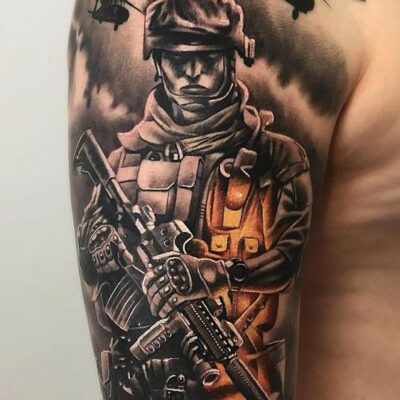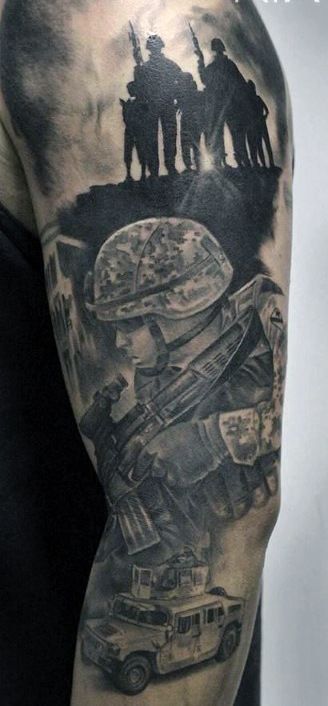
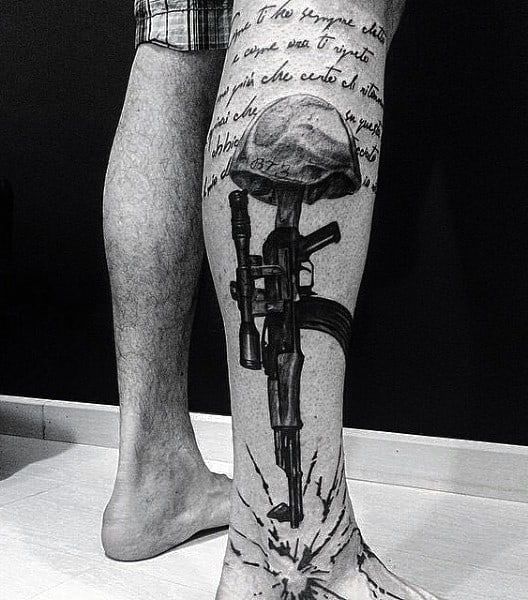
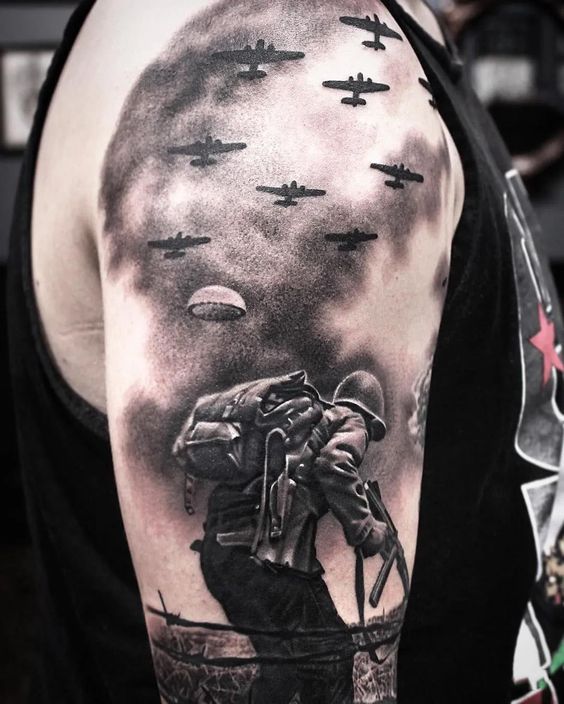
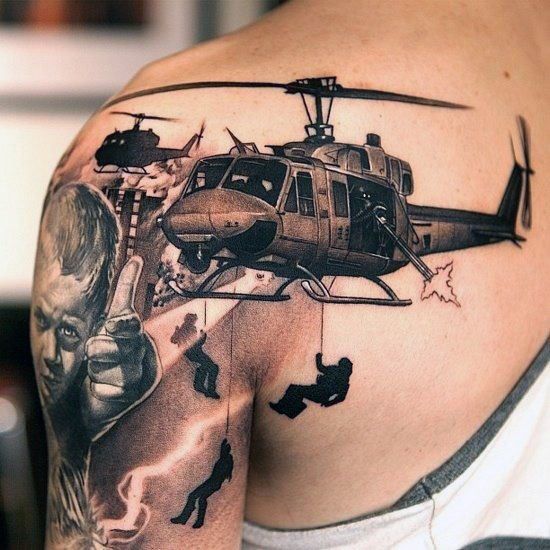
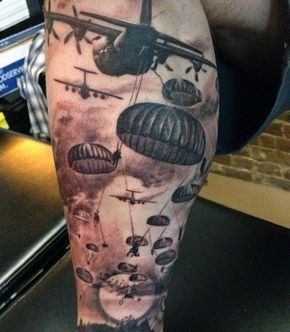


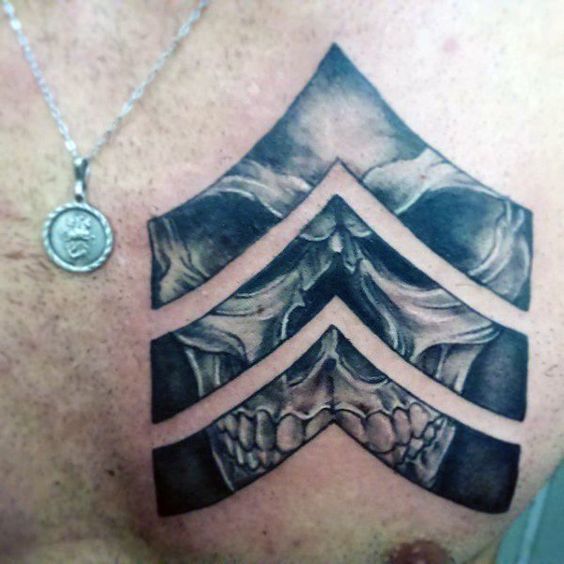

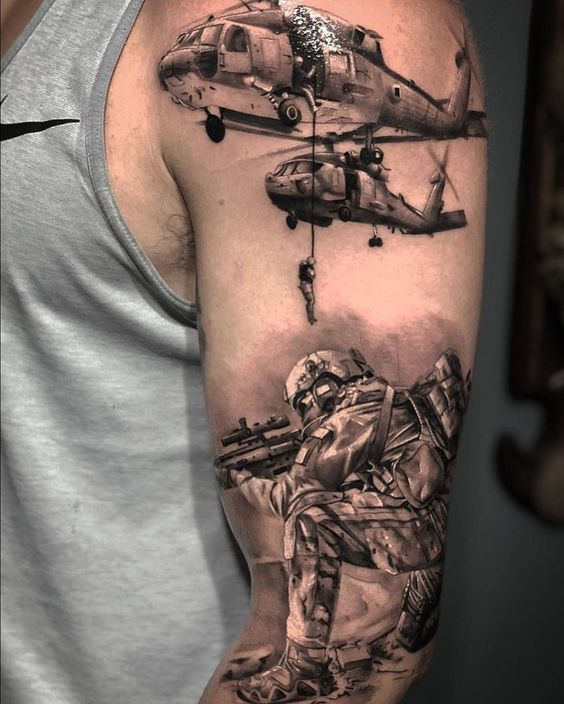
All image credit: Pinterest
Military Tattoos: Military tattoos have long maintained a powerful place in the armed forces, acting as enduring symbols of identity, pride, and connection among service members. These linked emblems narrate tales of valor, allegiance, and patriotism carved into the skin of those who have suited or are currently serving in various branches of the military.
Also See:
The Origins of Military Tattoos
The history of military tattoos outlines back centuries, with their origins deeply rooted in tradition and symbolism. Ancient civilizations, such as the Romans and Greeks, marked their soldiers with tattoos as a sign of belonging and commitment. These markings not only determined warriors but also infused a sense of unity and sense within military ranks.
Over time, military tattoos developed into detailed designs that reflected a soldier’s achievements, rank, and unit affiliation. From the complex patterns of Maori warriors to the tribal markings of indigenous peoples, tattoos became essential to the cultural fabric of military communities worldwide.
Symbolism and Meaning
Every military tattoo tells a remarkable story, summarizing the experiences and values loved by the wearer. Symbolism plays an important role in the design of these tattoos, with each element carrying deep significance:
Symbols of Service
Branch-specific symbols, such as the eagle, anchor, and globe for the U.S. Marine Corps, or the winged sword for the U.S. Air Force, represent the dedication and sacrifice of service members.
Unit Pride
Tattoos showing unit crests or insignias commemorate the bonds developed through shared hardships and triumphs on the battlefield. These symbols act as proof of the unwavering camaraderie among comrades-in-arms.
Honoring the Fallen
Many military tattoos pay tribute to fallen comrades, featuring memorial designs, dates of service, or poignant quotes as a tribute to those who made the supreme sacrifice in defense of their country.
Personal Journeys
Some military tattoos mirror personal milestones or important events in a service member’s career, such as deployments, promotions, or awards earned during their time in the armed forces.
Traditions and Rituals
The process of getting a military tattoo usually includes time-honored rituals and traditions that further solidify its importance within the military community. Tattooing ceremonies, especially prevalent in naval traditions, represent a sailor’s crossing of the equator or other nautical milestones.
In some units, getting a tattoo together is a bonding experience shared by service members, maintaining a sense of camaraderie and brotherhood among them. These shared tattoos act as permanent reminders of the shared experiences and enduring bonds developed in the crucible of military service.
Contemporary Trends
While traditional military tattoos stay popular, contemporary designs have also appeared, reflecting changing attitudes and societal norms. Modern military tattoos usually include elements of realism, geometric patterns, or minimalist designs, delivering a fresh take on classic motifs.
Furthermore, tattoos have become increasingly accepted within the military ranks, with many branches changing their tattoo policies to adapt to changing cultural perceptions. As a result, service members have more freedom to express themselves through body art while still upholding the values and traditions of the military.
At The End
Military tattoos stand as timeless symbols of honor, sacrifice, and connection within the armed forces. From ancient traditions to contemporary trends, these inked emblems act as a tangible reminder of the shared experiences and memorable bonds forged among service members worldwide. As the ink fades and the years pass, the stories behind each military tattoo endure, carved into the skin and the collective memory of those who have served their country with pride and distinction.

